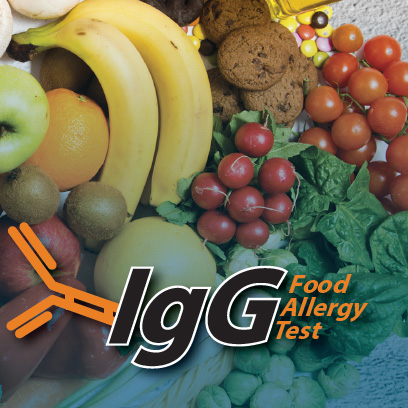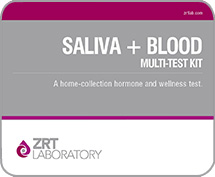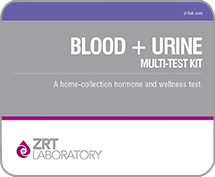IgG Food Allergy Test + Candida
$249.00
IgG (immunoglobulin G) test results can aid in the structuring of elimination diets that may relieve symptoms of many chronic neurological, gastrointestinal, and movement disorders. IgG antibodies are present in all body fluids and serve as a first line of defense against infection, but do not release histamine or produce the familiar immediate hypersensitivity reactions of itching, hives, flushing, or sneezing associated with classic IgE allergic reactions. In contrast, IgG antibodies may have more subtle immune effects, ranging from gastrointestinal bloating and nausea to headaches, mood changes, and fatigue. Unknowingly, people may continue to eat “offending” foods, not connecting delayed reactions to the foods eaten perhaps hours or days before.
Description
GENERAL
IgG (immunoglobulin G) test results can aid in the structuring of elimination diets that may relieve symptoms of many chronic neurological, gastrointestinal, and movement disorders. IgG antibodies are present in all body fluids and serve as a first line of defense against infection, but do not release histamine or produce the familiar immediate hypersensitivity reactions of itching, hives, flushing, or sneezing associated with classic IgE allergic reactions. In contrast, IgG antibodies may have more subtle immune effects, ranging from gastrointestinal bloating and nausea to headaches, mood changes, and fatigue. Unknowingly, people may continue to eat “offending” foods, not connecting delayed reactions to the foods eaten perhaps hours or days before.
By measuring IgG antibodies specific to antigenic food proteins, it is possible to identify which foods may be responsible for hard-to-define symptoms. The 93 foods tested in the IgG Food Allergy Test w/ Candida include representatives of major food groups common in the western diet. Elimination of IgG-positive foods can improve symptoms of irritable bowel syndrome, autism, ADHD, cystic fibrosis, rheumatoid arthritis, and epilepsy, according to numerous clinical studies.
Please note that the elimination diet is based only on IgG testing. To be safe, testing for IgE antibodies to food allergens should be considered PRIOR TO BEGINNING an ELIMINATION DIET. If a patient has negative results for IgG antibodies, it does not necessarily mean he/she is negative for IgE, IgM, or IgA antibodies.
The Great Plains Laboratory, Inc. has added Candida to the IgG Food Allergy Test. Candida problems are thought to be caused when the benign yeast form of Candida albicans or other Candida species mutates to its fungal form. Candida can overgrow portions of the intestinal mucosa, causing numerous symptoms. Candida species can take over areas of the intestinal wall causing numerous symptoms. If allowed to grow out of balance, the toxins produced by Candida can create minute holes in the intestinal lining, leading to “leaky gut” syndrome. When Candida or its byproducts enter the blood, Candida contributes to a chronic inflammatory immune system response (CIRS). A wide range of disorders have been linked to Candida, including autism, multiple sclerosis, depression, and chronic fatigue. Use of oral antibiotics, oral contraceptives, chemotherapy, and anti-inflammatory steroids greatly increase susceptibility to Candida.
DRIED BLOOD SPOT (DBS) COLLECTION
The IgG Food Allergy Test w/ Candida is available as a dried blood spot collection for patients and practitioners who can’t perform a blood draw. The specimen can be collected from the convenience of home and shipped to our laboratory for analysis. The dried blood spot test is the same price as the analysis.
CANDIDA ALBICANS SCALE IN IGG FOOD ALLERGY TEST
The Candida albicans scale has been updated to account for the observation that Candida-specific immunoglobulins are present in the specimens of virtually all individuals tested. The new scale is intended to provide a clearer indication of clinical significance and was established according to population percentile ranks obtained from a random subset of 1,000 patients. Specifically, the range of insignificant and low IgG values correspond to the first and second quartiles of the distribution, while moderate values denote individuals in the 51st to 97.5th percentiles. Those with an IgG value greater than the 97.5th percentile are considered to have a high concentration of Candida-specific immunoglobulins.
0-25th percentile: insignificant
26th-50th percentile: low
51st-97.5th percentile: moderate
97.5th and higher: high

THE BENEFITS OF TESTING
- Helps determine if food reactions are contributing to physical or mental symptoms
- Removal of highly reactive foods from the diet is a non-invasive, food-based therapy that often mitigates a patient’s symptoms
- Research and clinical studies suggest food allergies identified by IgG testing can be a major contributing factor in many chronic health conditions
- Food rotation and elimination diets can reduce stress on the immune system, lower gut inflammation, resolve food cravings, and reduce the potential for eating disorders
TOTAL IGG VERSUS IGG4 FOOD ALLERGY
Immunoglobulin G (IgG) is classified into several subclasses termed 1, 2, 3, and 4. IgGs are composed of two heavy chain–light chain pairs (half-molecules), which are connected via inter–heavy chain disulfide bonds situated in the hinge region (Figure 1). IgG4 antibodies usually represent less than 6% of the total IgG antibodies. IgG4 antibodies differ functionally from other IgG subclasses in their lack of inflammatory activity, which includes a poor ability to induce complement and immune cell activation because of low affinity for C1q (the q fragment of the first component of complement). Consequently, IgG4 has become the preferred subclass for immunotherapy, in which IgG4 antibodies to antigens are increased to reduce severe antigen reactions mediated by IgE. If antigens preferentially react with IgG4 antibodies, the antigens cannot react with IgE antibodies that might cause anaphylaxis or other severe reactions. Thus, IgG4 antibodies are often termed blocking antibodies. Another property of blood-derived IgG4 is its inability to cross-link identical antigens, which is referred to as “functional monovalency”. IgG4 antibodies are dynamic molecules that exchange half of the antibody molecule specific for one antigen with a heavy-light chain pair from another molecule specific for a different antigen, resulting in bi-specific antibodies that are unable to form large cross-linked antibodies that bind complement and thus cause subsequent inflammation(16). In specific immunotherapy with allergen in allergic rhinitis, for example, increases in allergen-specific IgG4 levels indeed correlate with improved clinical responses. IgG4 antibodies not only block IgE mediated food allergies but also block the reactions of food antigens with other IgG subclasses, reducing inflammatory reactions caused by the other IgG subclasses of antibodies to food antigens.
In IgG mediated food allergy testing, the goal is to identify foods that are capable of causing inflammation that can trigger a large number of adverse reactions. IgG1, IgG2, and IgG3 all are capable of causing inflammation because these antibodies do not exchange heavy and light chains with other antibodies to form bispecific antibodies. Thus, IgG1, IgG2, and IgG3 antibodies to food antigens can and do form large immune complexes or lattices that fix complement and increase inflammation. The presence of IgG4 antibodies to food antigens indicates the presence of antibodies to foods that will not usually cause inflammation even though high amounts of these antibodies do indicate the presence of immune reactions against food antigens. Testing only for IgG4 antibodies in foods limits the ability of the clinician to determine those foods that are causing significant clinical reactions that are affecting their patients. The importance of measuring other subtypes of IgG antibodies is highlighted in an article by Kemeny et al. (17). They found that IgG1 antibodies to gluten were elevated in all 20 patients with celiac disease but none of the patients had elevated IgG4 antibodies to gluten.
SPECIMEN REQUIREMENTS
The IgG Food Allergy Test is available as Dried Blood Spot.
- Dried Blood Spot (DBS):Five full circles of dried blood on the protein saver card is required.
Please note that the elimination of a food prior to sampling will reduce the ability for our laboratory to detect antibodies (allergies) to that food.




